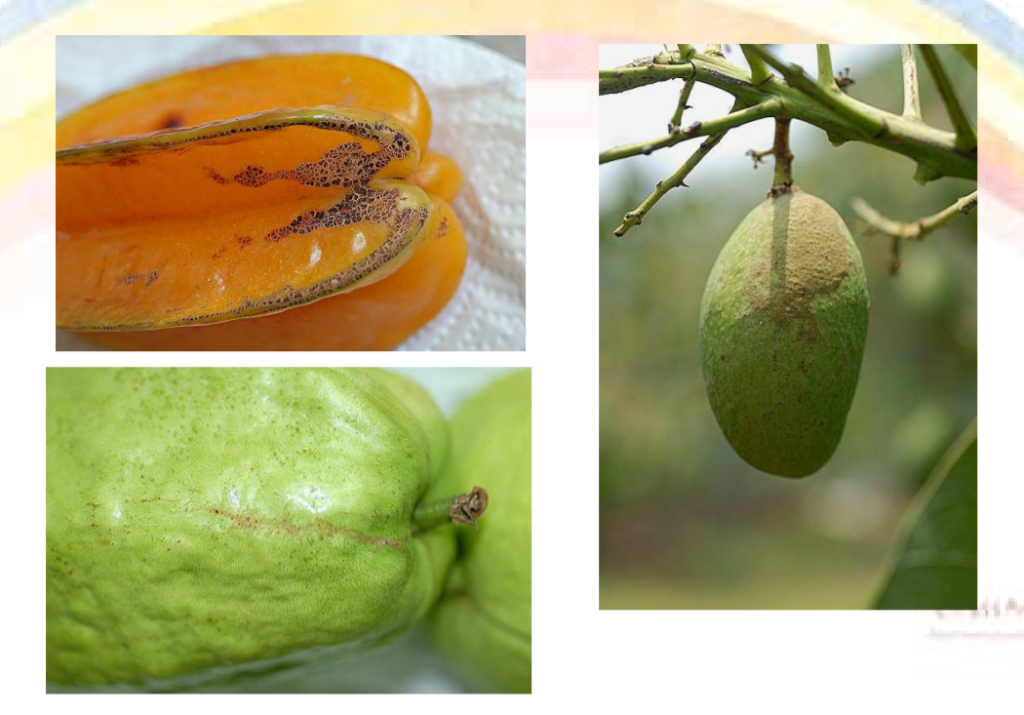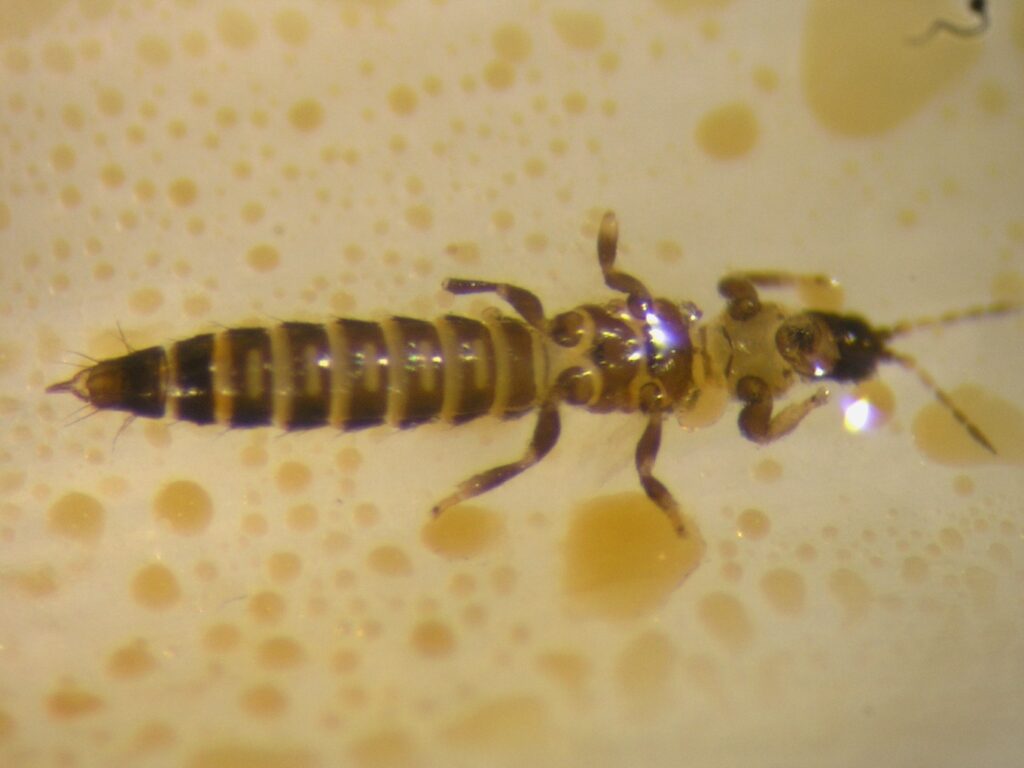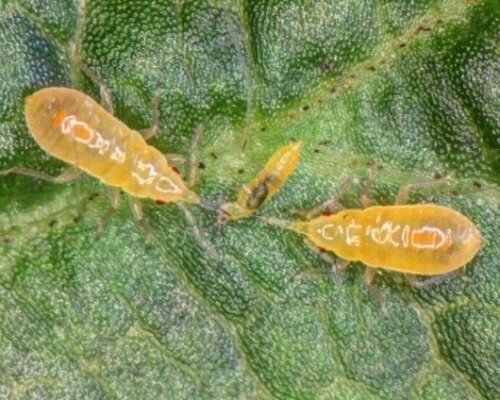What is thrips? What harm does it cause? How do you control the thrips? Thrips is a very common pest, it is a large family of insects, a worldwide pest, more than 6,000 species, including more than 300 kinds of harm to vegetables and other crops, and its reproduction number is extremely fast, often a lack of attention will bring considerable losses to growers, so thrips control is a subject that must be addressed.
Harm of Thrips
Thrips has a file type mouthpiece, it will first scrape the leaves of the plant, and then suck the sap inside, after the plant’s leaves have been damaged by thrips, the leaves will become curled, also, the tender leaves and shoot tissues are poorly developed and become curled and hard, the nodes will be shortened, and growth will be slow, the leaves will become thinner, and the dense small white spots or long stripes will be formed on the surface of the leaves ,if it were a flower, it will directly lead to bud drop, or if it were fresh fruit, it will pucker, just like a person with pimples, and if it were more serious, it will even directly lead to the problem of fruit drop.
Therefore, not only do the vegetable growers hate thrips, but also the flower growers, and the fruit growers hate thrips because it will directly reduce the production of fruit and make them look worse, resulting in poor sales and lower prices. This is why the thrips is a recognized worldwide pest, and the danger of thrips is one of the first issues that the growers need to address.

Habits of Thrips
The adult thrips is generally 0.5 to 2 mm in length and has a life span of 6 to 25 days. It is a hermaphroditic insect that can lay eggs without mating. When thrips lays eggs, it can lay 22 to 35 eggs, and it can complete one generation of reproduction in about 10 days. And its eggs are mostly laid in the leaf flesh tissue. Therefore, it is very difficult to control its reproduction effectively.
Thrips occurs all year round, mainly in the open field in spring, summer and autumn, and in greenhouses in winter, affecting crops such as eggplant, cucumber, pepper and watermelon. The peak season is in the fall or winter in November to December, and the second peak season is in March to May.
The thrips prefers warm and dry weather, its suitable temperature is 23 ℃ ~ 28 ℃, suitable air humidity is 40% ~ 70%, and it can’t survive when it is too humid , and when humidity reaches 100%, the temperature reaches 31 ℃, all the larvae will be dead. In the rainy season, if it rains continuously, water accumulates in the leaf axils , which can also lead to the death of the larvae.

Thrips Prevention and Control
Now we know that the seriousness of thrips damage, how do we start to do a good job of thrips control? In fact, the chemical control is the most common way to prevent and control the thrips, and because the thrips is good at hiding, it is not easy to control with spraying. I do not like to use chemical control methods.
Since we don’t use chemical control methods to deal with thrips, what else can we do? Of course, there are still other ways to control thrips, so let’s take a look at other ways to see if there will be a way that fits your needs.
1.Biological Prevention and Control
There are many kinds of natural predators of the thrips, including predatory species such as the thrips weevil, lacewing, burrowing gnat, thrips and plant catcher mite, etc., which have the effect of suppressing the thrips population. Besides paying attention to the conservation of natural enemies to increase the natural control power, we can also increase the release of natural enemies to control thrips to reduce damage and loss.

2. Physical Prevention and Control
According to research, thrips is particularly attracted to the blue color, so we can hang blue sticky insect plates next to the plant, when the thrips sees this color, it will naturally jump towards the blue sticky insect plates, and then achieve the effect of catching thrips.
At the same time, this can also detect the density of thistle pests. When setting up a sticky board in a field, keep the crop and the board on the same level, and set up a sticky board on a fruit tree, hanging it over the tender leaves and tips. There are three benefits of the practical sticky board, first, it is easy to open , second, non-toxic and harmless to improve food safety, third, the speed of the sticky board pest control effect is obvious.
But the blue board only attract the thrips, so it can’t catch other pests, and it is recommended that you can also put a yellow board, so that all the pests can be eliminated.
3. Thrips alarm pheromone
Insects often use pheromones to communicate, some use it to attract the opposite sex to mate, and some to tell their counterparts that there is good health and danger, which is called the language of insects. The thrips alarm pheromone is just like its name, it is the pheromone that makes the thrips feel nervous, and it emits the message “It’s dangerous here and don’t come too close” to achieve the effect of prevention and control.
Unlike sex pheromones, which are used by farmers, sex pheromones are gender-selective and must be used with a lure box, but alarm pheromones do not require a lure box, and will make the pests uneasy and cause a repellent effect, and reduce the egg production rate, but cannot cause the death of the pests. Therefore, it is very important to grasp the newly occurred in the best timing.
However, it has a disadvantage that it is not like chemical control as absolute prevention, it can only achieve relative control, after all, there will still be greedy some thrips not afraid of the danger label, but compared to before and after, it can still be seen that it has greatly reduced the harm brought by “thrips”.
4. Humidity Control
Because preference of thrips for a warm and dry environment, it can be controlled without special application when there is continuous rainfall; if there is no rain for a long time in warm weather, spray water can be done to increase the humidity in the field, which is not conducive to the survival of thrips reproduction and can also prevent spider mites.
5. Plant Protection Materials
It will be more effective to apply 50 to 100 times of comfrey extract, neem oil (the number of times depends on the product label), or 100 times of soap berry extract at the early stage of pest infestation. The application of extracts may be affected by the concentration of ingredients and the environment. It has been suggested that extracts can reduce the population of insect offspring and reduce adult egg-laying preference and egg hatching rates.

Conclusion
There are many host plants for thrips, and when they are not suitable for growing and reproducing on cultivated crops, they often move to live in the vicinity of weeds or other plants, so removing other weeds and other plants can reduce the source of insects and reduce the damage to crops.
In short, these control methods can be effective in the early stages of thrips infestation, but if its population grows rapidly and becomes uncontrollable, using chemicals to quickly control thrips infestation will be the most correct way.


